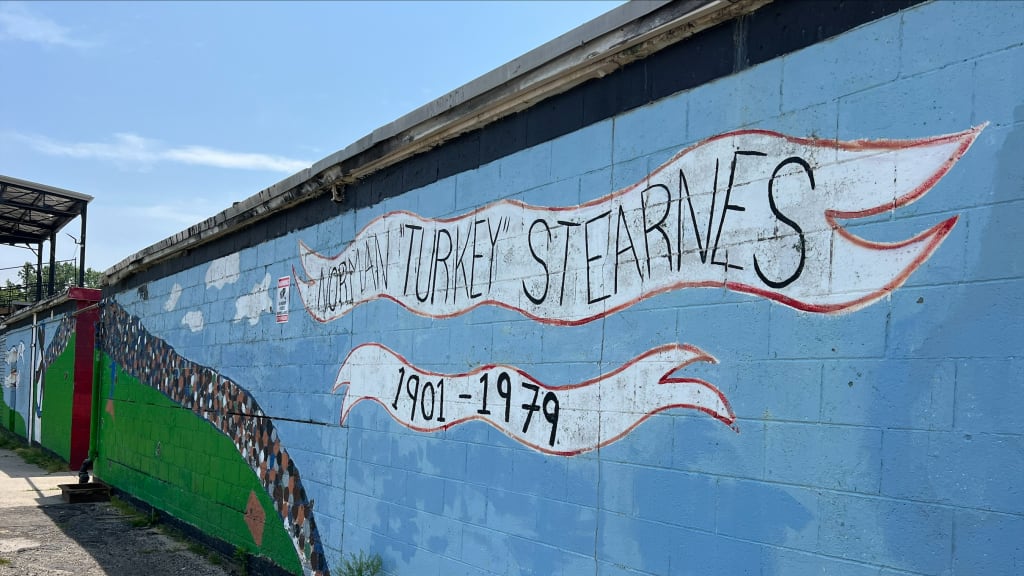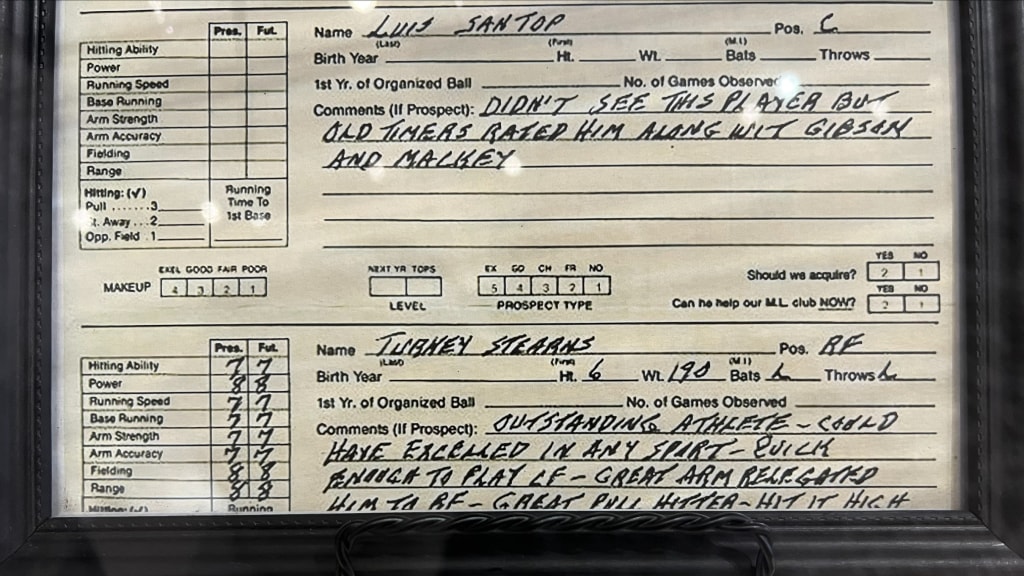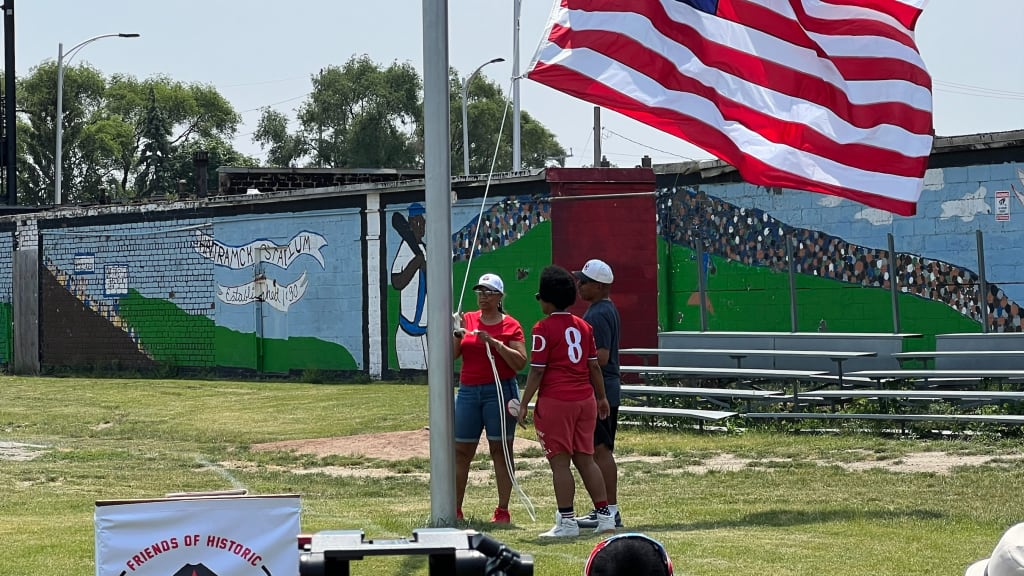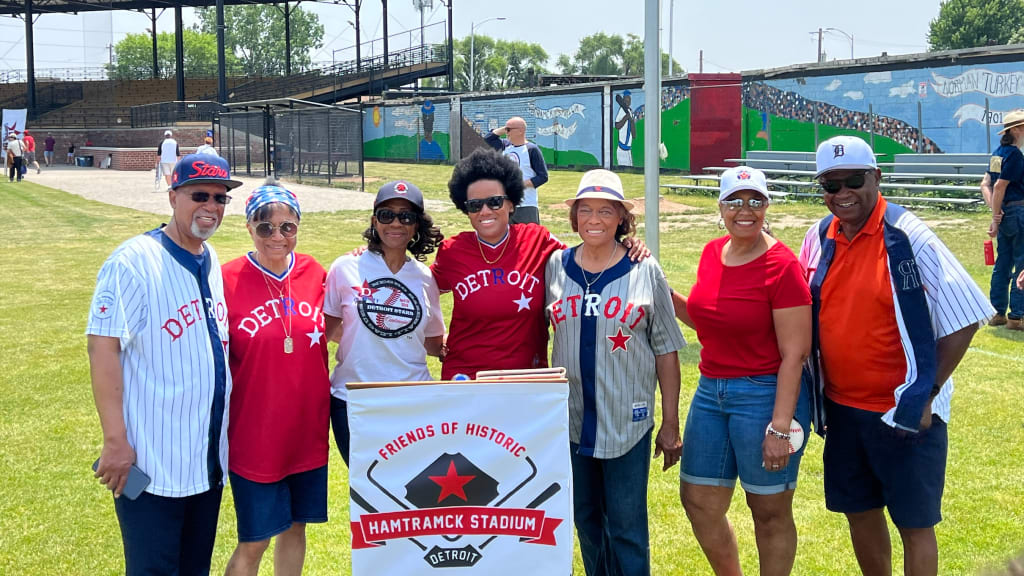
Tucked within a display case at Hamtramck Historical Museum’s new baseball exhibit is a series of scouting reports the great Buck O’Neil filled out on former Negro Leagues players he played with, played against or watched. One was on Norman “Turkey” Stearnes, written out on an old scouting card as if he were being scouted in present day:
“Outstanding athlete -- could have excelled in any sport,” the report reads. “Quick enough to play LF -- great arm relegated him to RF. Great pull hitter. Hit it high.”

Stearnes excelled in Detroit for much of his Hall of Fame career. And for part of his tenure with the Detroit Stars, he roamed the outfield at Hamtramck Stadium, one of the last former Negro Leagues ballparks still standing.
Today, Hamtramck Stadium is thriving, renovated to host everything from Detroit high school games to youth and travel ball tournaments to cricket clubs and even a kickball match. Fitting, then, that for the Juneteenth holiday on Monday afternoon, Stearnes’ daughters joined family members, friends, media and interested locals for a ceremony honoring Stearnes for the 100th anniversary of Stearnes’ rookie season in Detroit.

After Stearnes’ daughters, Joyce Stearnes Thompson and Rosilyn Stearnes-Brown, sang “The Star-Spangled Banner” and “Lift Every Voice and Sing,” Stearnes’ granddaughter, Venessa Ivy Rose, helped raise the American flag up the newly-renovated flagpole, the first time the flag has flown over the stadium in at least 25 years. A Detroit Stars flag, flown over Comerica Park as part of the Tigers’ annual Negro Leagues Weekend, was donated by the Tigers for the occasion. Friends and colleagues played catch on the same field where Turkey Stearnes once ran down fly balls.
In many ways, the story of Stearnes’ arrival in Detroit bears similarities to many who came to the Motor City for work during the early 20th century. Stearnes was 22 and a budding ballplayer in 1922, having earned his nickname by the way his arms flapped when he ran, but he also needed to support his family after his father died when Turkey Stearnes was a teenager.

After graduating high school and being scouted and signed by former Detroit Stars catcher Bruce Petway, Stearnes arrived in Detroit in the spring of 1923 and found a secondary job with the Briggs Manufacturing Company, an auto body manufacturer owned by the same family that owned the Tigers at the time.
When the season began near the end of April, Stearnes made his impact on the Stars almost immediately. He hit for the cycle barely a month into his career, and hit three triples in another game. According to baseball-reference, Stearns hit .362 that year with 17 home runs, 18 doubles, 14 triples, 85 RBIs and a .723 slugging percentage in just 69 games. He joined the Stars in an exhibition series against the American League’s St. Louis Browns, who had just finished their season in town to face the Tigers. The Stars won two of three with no small help from Stearnes.
In those days, the Stars played at Mack Park on Detroit’s east side. Stearnes became a prime attraction with his mix of power and speed, leading the league in batting average, hits, doubles, triples, home runs and RBIs at various points. Stearnes wasn’t stocky by any stretch, but he became one of the great power hitters of his league. A fire at Mack Park during the 1929 season forced the Stars to relocate to Hamtramck Stadium for 1929 and 1930. Stearnes was one of 17 future Hall of Famers to play in Hamtramck.
The team eventually succumbed to financial difficulties during the Great Depression, and Stearnes moved on to the Chicago American Giants. But he returned to Detroit for a brief spell later in his career, then made it his home in retirement, working in the rolling mills until his retirement in 1964. He was inducted into the Baseball Hall of Fame in 2000.

Hamtramck Stadium is expected to host about 200 games and events this year after hosting 150 events last year. The historic grandstand reopened last year, and more upgrades are planned. The field was named in Stearnes’ honor, and a mural along the third-base line proudly displays his legacy.
The Tigers will celebrate Stearnes’ legacy next month as part of its annual Negro Leagues weekend. The first 15,000 fans through the gates for their Saturday, July 22 game against the Padres will receive a Turkey Stearnes Detroit Stars replica jersey.
